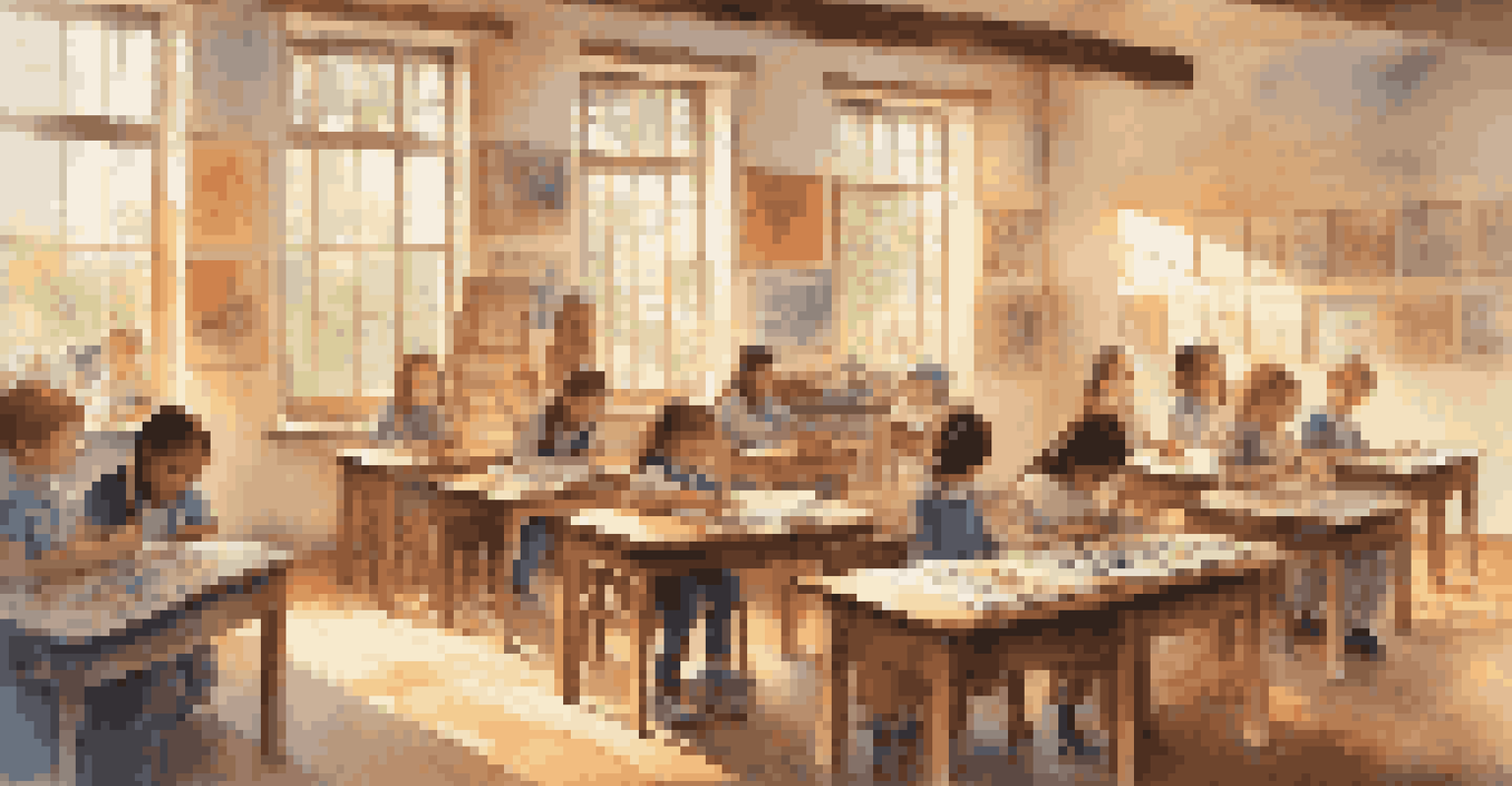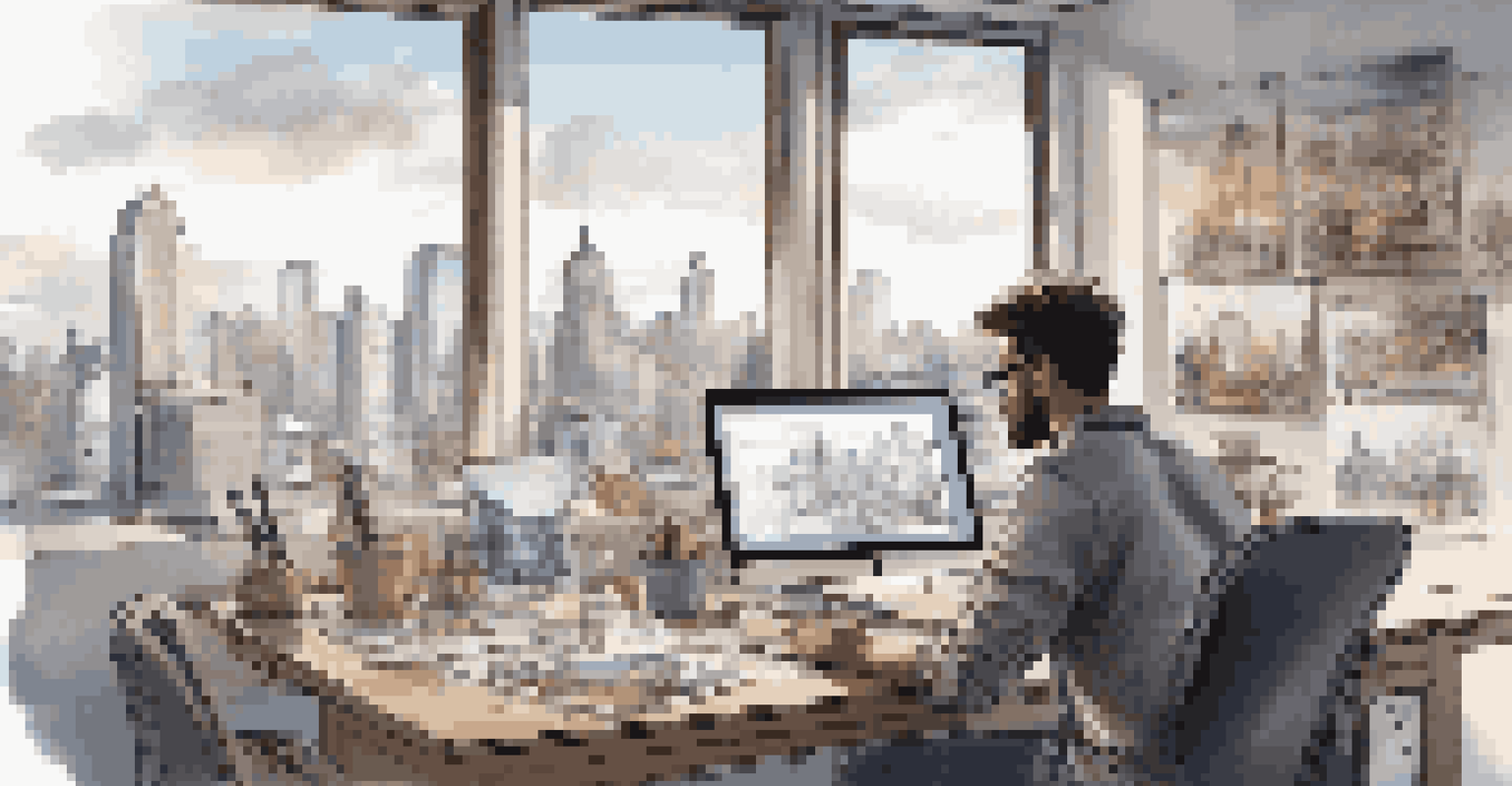Art as Empowerment: Transforming Lives Through Creative Expression

Understanding Art as a Tool for Empowerment
Art has long been recognized as a powerful medium for expression, allowing individuals to convey their thoughts and feelings. When we talk about empowerment through art, we mean enabling people to find their voice and express their identity. This process not only fosters self-awareness but also promotes a sense of belonging within communities.
Every artist dips his brush in his own soul, and paints his own nature into his pictures.
Consider a young artist who uses painting to depict their experiences. Each brushstroke becomes a narrative, telling stories of triumph, struggle, and hope. This act of creation can serve as a catalyst for personal growth, as it encourages individuals to reflect on their lives and the world around them.
Moreover, art can bridge gaps between different cultures and communities, showcasing diverse perspectives. In essence, art becomes a universal language that unites us, allowing for dialogue and understanding in a world that often feels divided.
Creative Expression in Personal Transformation
For many, engaging in creative activities can lead to profound personal transformation. The process of creating art can be therapeutic, providing an outlet for emotions that might otherwise remain unexpressed. Many psychologists advocate for art therapy as a means to help individuals work through trauma, anxiety, or depression.

Imagine someone who has faced significant challenges in life, such as loss or hardship. By channeling their pain into a creative project, they may find solace and healing. This journey can empower them to reclaim their narrative and inspire others who may be facing similar struggles.
Art Empowers Personal Expression
Art serves as a powerful medium for individuals to express their identity and foster personal growth.
Ultimately, the act of creating something beautiful can foster resilience and confidence. When individuals see their work appreciated by others, it reinforces their sense of worth and potential, paving the way for further exploration and growth.
Community Building Through Collaborative Art Projects
Art has a unique capacity to bring people together, particularly through collaborative projects. When individuals work as a team to create a mural or a community garden, they not only produce something visually appealing but also strengthen social bonds. This collaboration fosters a sense of ownership and pride within the community.
Art is the most beautiful of all lies; it is a lie that tells the truth.
Consider local art festivals that invite artists of all backgrounds to showcase their work. These events create opportunities for connection, allowing people to share their stories and experiences through art. The resulting dialogues can lead to greater understanding and empathy among diverse groups.
Furthermore, these collaborative art projects often help address community issues, such as social justice or environmental concerns. By harnessing the power of collective creativity, communities can advocate for change and inspire action, proving that art is indeed a powerful tool for empowerment.
Art Education: Nurturing Future Generations
Access to art education is crucial for nurturing creativity in future generations. When children are exposed to various forms of artistic expression, they develop critical thinking and problem-solving skills. These experiences can also boost their self-esteem and encourage them to explore their unique talents.
Imagine a classroom where students are encouraged to express themselves through painting, music, or dance. This environment nurtures their creativity and allows them to experiment with different mediums. As a result, they learn to appreciate diverse forms of expression while developing their own artistic voice.
Collaboration Builds Community Bonds
Collaborative art projects unite individuals, creating a sense of pride and ownership within communities.
Investing in art education can have lasting effects, not only on individual students but also on their communities. As these young artists grow, they carry with them the lessons learned through creative expression, ultimately shaping a more vibrant and inclusive society.
The Role of Art in Social Change Movements
Throughout history, art has played a pivotal role in social change movements, serving as a powerful form of protest and advocacy. From political murals to spoken word poetry, artists have used their platforms to challenge injustices and inspire action. This form of creative expression resonates with audiences, often sparking conversations that lead to meaningful change.
Consider the impact of protest songs during the civil rights movement. These powerful anthems mobilized communities and galvanized support for social equality. Similarly, contemporary artists continue to use their creativity to address issues such as climate change, racism, and gender inequality.
By harnessing the power of art in activism, individuals can inspire others to join the cause. Art not only helps raise awareness but also motivates people to envision a better future, illustrating the profound impact creativity can have on social movements.
Digital Art: Expanding Creative Possibilities
The rise of digital technology has opened up new avenues for creative expression. Digital art allows individuals to explore their artistic talents without the constraints of traditional mediums. From graphic design to digital painting, the possibilities for creativity are virtually endless.
Imagine a young artist using a tablet to create stunning visuals that can be shared globally through social media. This accessibility empowers them to reach wider audiences, connect with fellow artists, and even monetize their work. It also breaks down barriers that once limited participation in the art world.
Art Fuels Social Change Movements
Throughout history, artists have utilized their creativity to challenge injustices and inspire social change.
Moreover, digital platforms provide spaces for marginalized voices to be heard. Artists from diverse backgrounds can share their stories and perspectives, enriching the global art community. In this way, digital art not only transforms individual lives but also fosters a more inclusive and representative artistic landscape.
The Lasting Impact of Art on Personal and Community Well-Being
The benefits of engaging with art extend far beyond the individual; they ripple through communities, enhancing overall well-being. When people participate in creative activities, they report higher levels of happiness and fulfillment. Art can serve as a reminder of shared humanity and the beauty of diverse experiences.
Communities that prioritize art often see increased social cohesion, as residents come together to celebrate creativity. Public art installations, exhibitions, and performances can transform spaces and foster a sense of pride among community members. This shared experience creates lasting memories and strengthens community ties.

Ultimately, art has the power to inspire, heal, and unite us. By embracing creativity, we can transform not just our own lives, but also the lives of those around us, creating a ripple effect that enhances the fabric of society as a whole.